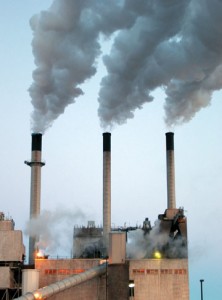We have much more to do and your continued support is needed now more than ever.
Warm as an Angry Bear

Right in the middle of the experience, though, with a grizzly charging after me, something truly bizarre occurred. Maybe you’ve heard that time slows down when your life is in jeopardy? Well, that’s exactly what happened to me. Every second seemed to stretch on forever, and I realized, pretty much out of the blue, that I was indignant. Hell, I was angry. You’re never supposed to run away from a grizzly bear, right? And here I was, sprinting away from an irate mama griz in a pair of LL Bean slippers.
You have to understand that none of this was supposed to happen. It wasn’t like we made some huge, boneheaded mistake that was guaranteed to put our lives in danger. It was more a series of minor miscalculations, each one compounding the last, until, without ever intending to put ourselves at risk, a friend and I found ourselves running down a dirt road with mama bear in hot pursuit.
To make matters worse, a truly horrible thought popped into my head as all this was playing out. I was going to die. I was going to die, and they were going to write on my tombstone that I was the only man in human history dumb enough to run away from a grizzly bear in his slippers. Honestly, I couldn’t understand how any of this was happening; how I was about to be mauled to death when just an ounce of common sense and a tiny bit of foresight could have kept me safe and sound.
And that’s the connection I’d like to make today. Climate change is an awful lot like that big, angry grizzly bear. It’s out there in the shadows and we’re strolling toward it, vaguely aware that something might be askew; that it feels wrong to be traveling this particular path. Yet instead of changing direction, we’re making light of the situation and asking ourselves, “What’s the worst that could happen?” It’s almost as if we’ve convinced ourselves that a handful of poor decisions and a pinch of willful ignorance will never, ever turn around and bite us on the backside.

We are indeed walking the road toward climate chaos. Perhaps not consciously, and certainly not with premeditation, but we can’t dump more than 30 billion tons of CO2 into the atmosphere each and every year and expect that our climate won’t react. You walk around in a heavy jacket, you get warmer. You shoot unimaginably huge quantities of greenhouse gasses into the sky, the planet heats up. It’s just the way it works.
Ninety-seven percent of the world’s climate scientists are convinced that our CO2 emissions are cooking the planet. As the U.S. National Academy of Sciences pointed out a couple of years ago, human-caused climate change is a “settled fact”.
The good news is that we’re still in a place where a little foresight and a little common sense can go a long way toward keeping us safe. Yes, things are getting tenuous, and yes, the future is looking a lot darker than we’d imagined just a few years ago. But if enough of us stand up to the climate deniers and demand action; if enough of us refuse to sit quietly on the sidelines while one of the biggest threats to ever come down the pike barrels toward us, then we can still come out of this in one piece.
But opportunity isn’t going to perch on our shoulder for much longer. The forecast is for grim. No, that’s not a typo. It’s for grim – for heat like we’ve never seen before, and for melting glaciers, and for storms of the millennia; for huge floods; for droughts and something beyond droughts called “dustbowlification;” for dying forests and extreme wildfires and a planet far, far different from the one we know and love. That’s why we made our Cold Waters film, and it’s why so many of us work day-in and day-out to educate people about climate change.
[vimeo]https://vimeo.com/124560152[/vimeo]
Here’s the thing. I’m just some guy who loves the outdoors. I shouldn’t have to tell you about climate change. But I’ve run from the bear, and I don’t ever want to do it again. Not with my ten year old son at my side; not with everything I care about on the line. We need to pick a different road. It’s time to get our act together and give ourselves a chance. If we want to share a livable world with our kids and our grandkids, then we have to get to work.
 About the Author: Todd Tanner is a longtime outdoor writer, as well as the president of Conservation Hawks. While he’s rooting for an even stronger version of the President’s Clean Power Plan, he supports every reasonable effort to limit CO2 emissions and shift America toward clean, renewable energy.
About the Author: Todd Tanner is a longtime outdoor writer, as well as the president of Conservation Hawks. While he’s rooting for an even stronger version of the President’s Clean Power Plan, he supports every reasonable effort to limit CO2 emissions and shift America toward clean, renewable energy.





















